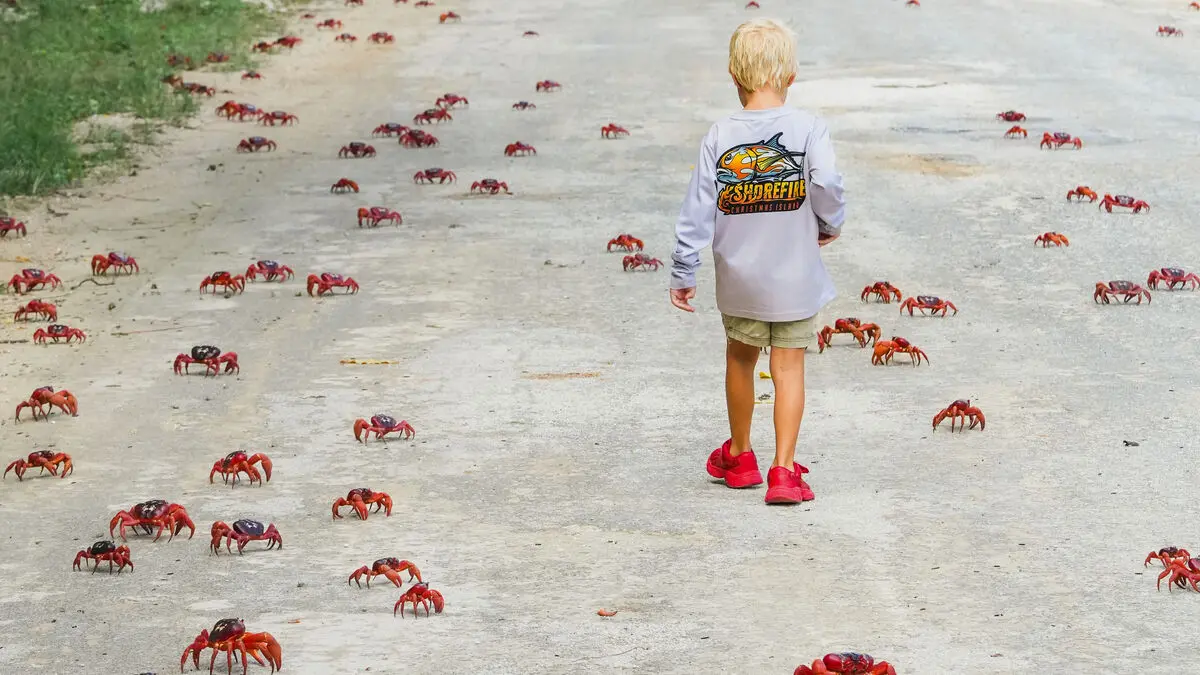Every year, up to 100 million crabs migrate across Little Christmas Island, an Australian island south of Indonesian Java. They move from the forest to the sea to lay their eggs on the beach.
For the around 1,200 islanders, the migration poses a logistical challenge. Special "crab roads" have been built to avoid congestion on the roads, and local radio stations keep residents updated on the red crabs' movements. Some have to shovel their way out of their own driveways in the mornings, says islander and conservationist Alexia Jankowski to the news agency AP.
Some may think they are a nuisance, but most of us think it's a bit of a privilege to experience this, she says.
The migration usually culminates with egg-laying in mid-November. Then, small crab larvae swim out into the sea, where they drift around for a few weeks before shedding their shells and developing into small crabs. When the young subsequently return to land, the islanders help out with unconventional tools.
When they are small babies, they are only about half the size of a nail. Then we cannot shovel them, because then we crush them. So instead, we use leaf blowers, says Jankowski.





